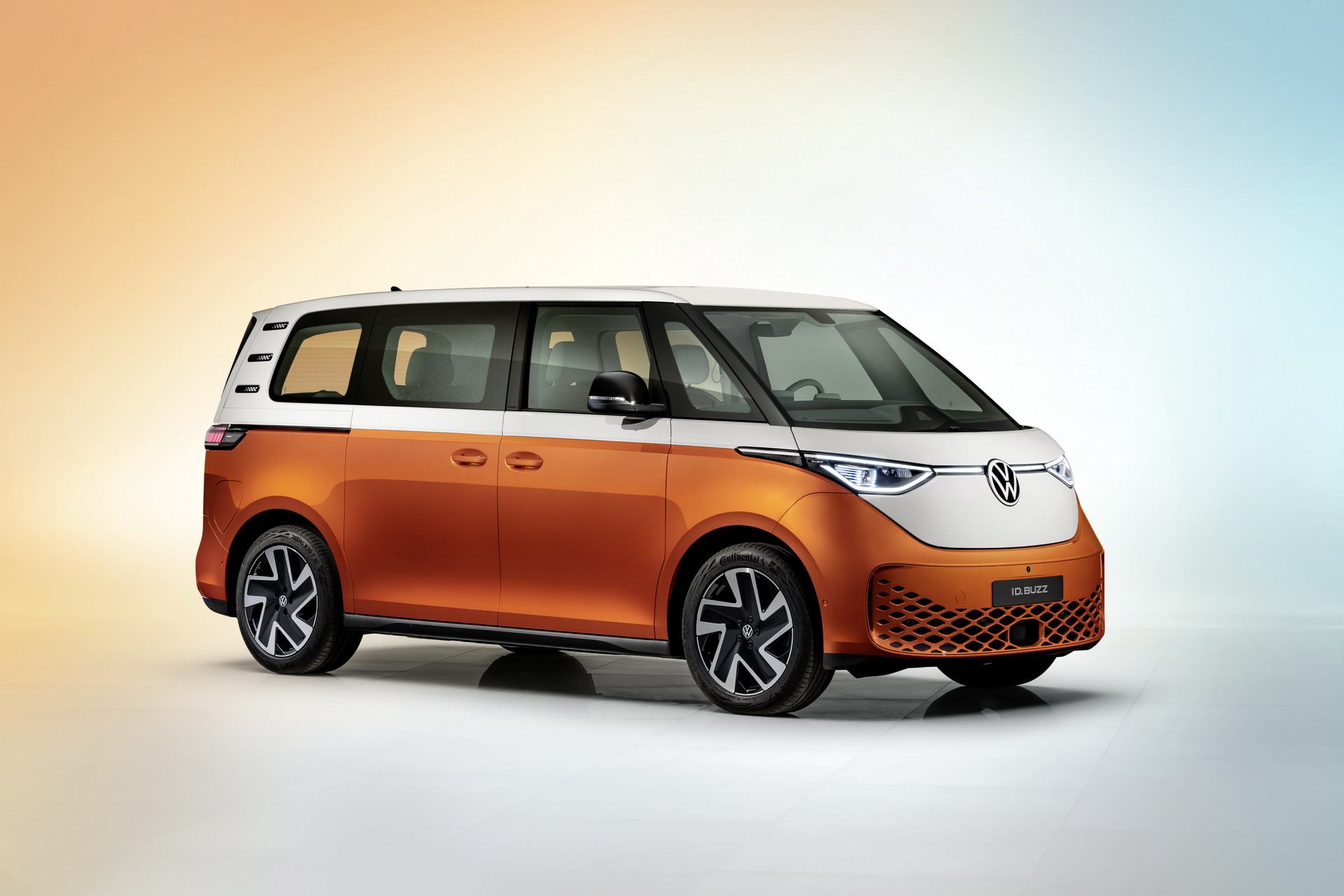Volkswagen celebrates the world premiere of the electric ID. Buzz
Volkswagen has now officially celebrated the world premiere of the new ID. Buzz and ID. Buzz Cargo
With Europe's first purely electrically powered bus and van series, the manufacturer wants to provide another answer to sustainable and CO2-free mobility. The ID. Buzz comes with the latest ID. Software is intended to set new standards in its segment with modern systems and functions in terms of safety, comfort and charging, VW said in a recent press release.
Carsten Intra, Chairman of the Board of Management of the Volkswagen Commercial Vehicles brand, adds: "Both versions of the ID. Buzz are groundbreaking in terms of their sustainability: they are produced and delivered in a balance sheet-neutral manner about CO2. In addition, recycled plastics are used and the interior is completely animal leather-free." And further: "The ID. Buzz will also be used in future autonomous mobility concepts such as ride pooling - an e-shuttle service of the Group subsidiary MOIA that can be booked via the app. So the electric Bulli is also part of the future of inner-city transport."
Like all models in the ID. Family from Volkswagen Passenger Cars, the ID. Buzz built by Volkswagen Commercial Vehicles in Hanover is technically based on the Group's modular e-drive system (MEB). The scalable high-volume platform for pure electric cars provides the basis for a wide range of models and segments across all brands. Its architecture allows further development of software and technology, from which both new models such as the ID. Buzz as well as models already delivered can benefit from over-the-air updates.
ID. Software of the latest generation with new assistance and charging functions: The assistance systems of the new series are designed to perfect comfort and safety. For example, the ID. Buzz and ID. Buzz Cargo are equipped with the local warning system "Car2X", which uses signals from other vehicles and the traffic infrastructure to detect dangers in real-time. Also standard: the "Front Assist" emergency braking system and, in the minibus, the "Lane Assist" lane departure warning system. With the new software, new assistance functions also find their way into the ID. Family: The "Travel Assist with Swarm Data" is available as an option, enabling semi-automated driving over the entire speed range and, for the first time at VW, an assisted lane change on the motorway. Also new: the "Memory Function" for automated parking on a previously saved route.
Up to 170 kW charging power, Plug & Charge and bidirectional charging
Throughout Europe, the ID. Buzz and the ID. Buzz Cargo will be launched with a 77 kWh battery (gross energy content: 82 kWh). It supplies power to a 150 kW electric motor, which - like the boxer engine in the T1 - drives the rear axle. The battery, which is integrated deep down in the sandwich floor, and the lightweight e-drive result in good weight distribution and a low centre of gravity. Both factors optimise handling and agility - typical for e-cars.
The lithium-ion battery is charged at wall boxes and public charging points with an 11 kW alternating current (AC). Using a CCS plug at a DC fast charging station (direct current), the charging power increases to up to 170 kW; the battery is thus charged from 5 to 80 per cent after around 30 minutes. The series will also be equipped with the latest ID. Software, the series will also offer the "Plug & Charge" function in future. In this case, the ID. Buzz authenticates itself via the charging plug at compatible DC fast-charging stations with the ISO 15118 standard and thus exchanges all necessary data with the charging point - a convenience plus.
Bidirectional charging, in turn, enables the ID. Buzz to feed unneeded energy from the battery into the customer's home network (vehicle-to-home). Power transfer and communication take place via a special DC-BiDi wall box.
Iconic design with a 1950s model
The ID. Buzz is the new face of sustainable mobility. The visual bracket around the future-oriented technologies is formed by the design of the ID. Buzz. "The T1 - an icon of the 1950s - gave people mobility and freedom. With the ID. Buzz, we are transferring this T1 DNA into the present day and thus into the era of electric mobility," outlines Jozef Kabaň, Head of Volkswagen Design. "The ID. Buzz brings a lot of sympathy and closeness to people back onto the road," the chief designer continues.
